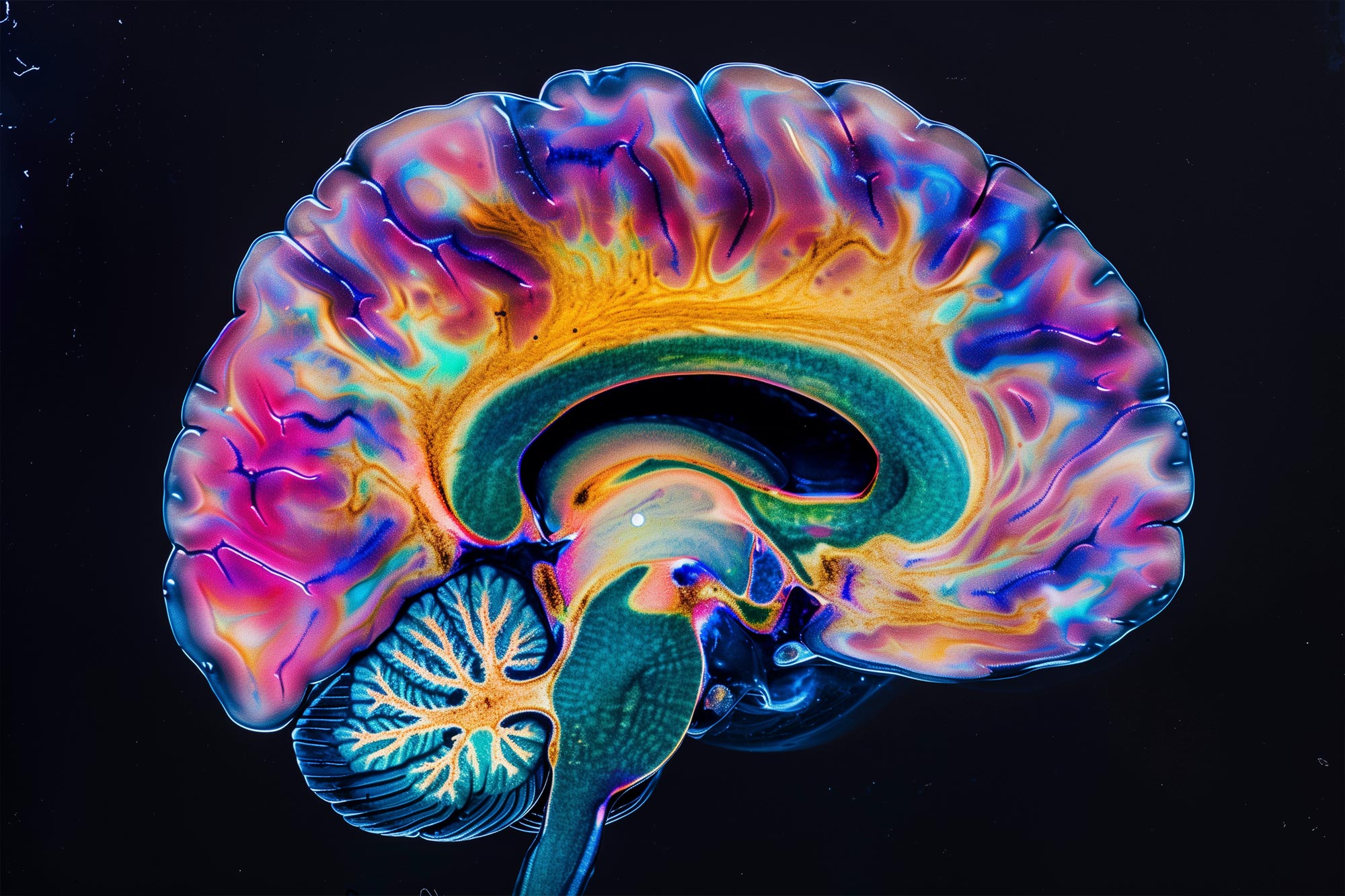The researchers discovered that the
” data-gt-translate-attributes=”({“attribute=”” tabindex=”0″ role=”link”>SARS-CoV-2 Spike protein persists in the brain and skull bone marrow for years after infection, potentially leading to chronic inflammation and neurodegenerative diseases.
Researchers from Helmholtz Munich and the Ludwig-Maximilians-Universität (LMU) have discovered a possible explanation for the neurological symptoms associated with Long COVID. Their study reveals that the SARS-CoV-2 Spike protein can persist in the protective layers of the brain (the meninges) and in the bone marrow of the skull for up to four years after infection. This persistent spike protein can cause chronic inflammation and increase the risk of neurodegenerative diseases.
Led by Professor Ali Ertürk, director of the Institute for Intelligent Biotechnologies at Helmholtz Munich, the research also found that mRNA
” data-gt-translate-attributes=”({“attribute=”” tabindex=”0″ role=”link”>COVID-19 vaccines significantly reduce the accumulation of spike proteins in the brain. Despite this reduction, the spike proteins that remain in the skull and meninges after infection could be targeted by new therapeutic approaches aimed at mitigating long-term effects.
Spike protein accumulates in the brain
A new AI-based imaging technique developed by Professor Ali Ertürk’s team provides new insights into how the SARS-CoV-2 spike protein affects the brain. The method makes organ and tissue samples transparent, allowing three-dimensional visualization of cellular structures, metabolites and, in this case, viral proteins. Using this technology, researchers discovered previously undetectable distributions of spike proteins in tissue samples from COVID-19 patients and mice.
The study, published in the journal Cellular host and microberevealed significantly elevated concentrations of spike protein in bone marrow and skull meninges, even years after infection. The Spike protein binds to so-called ACE2 receptors, which are particularly abundant in these regions.
“This could make these tissues particularly vulnerable to long-term accumulation of spike proteins,” says Dr. Zhouyi Rong, first author of the study. Ertürk adds: “Our data also suggest that the persistent spike protein at brain borders may contribute to the long-term neurological effects of COVID-19 and Long COVID. This includes accelerated brain aging, which can lead to a loss of five to ten years of healthy brain function in affected individuals.
Impact of Vaccination on Spike Protein Levels
Ertürk’s team found that the BioNTech/Pfizer mRNA COVID-19 vaccine significantly reduces the accumulation of spike proteins in the brain. Other mRNA vaccines or types of vaccines, such as vector- or protein-based vaccines, have not been studied. Mice vaccinated with the mRNA vaccine showed lower levels of the spike protein in brain tissue and skull bone marrow compared to unvaccinated mice. However, the reduction was only about 50%, leaving residual spike proteins that continue to pose a toxic risk to the brain.
“This reduction is an important step,” says Professor Ertürk. “Our results, although derived from mouse models and only partially transferable to humans, highlight the need for additional therapies and interventions to fully address the long-term burdens caused by SARS-CoV-2 infections. » Furthermore, additional studies are needed to assess the relevance of these findings for patients with Long COVID.
Challenges and progress in long-term treatment of COVID
Globally, 50 to 60 percent of the population has been infected with COVID-19, and five to ten percent are suffering from Long COVID. This represents approximately 400 million individuals likely to carry significant amounts of spike proteins.
“This is not just an individual health problem, but a societal challenge,” says Professor Ertürk. “Our study shows that mRNA vaccines significantly reduce the risk of long-term neurological consequences and provide crucial protection. However, infections can still occur after vaccination, causing spike proteins to persist in the body. These can lead to chronic inflammation of the brain and an increased risk of stroke and other brain injuries, which could have substantial implications for global public health and health systems around the world.
Diagnosing and treating long COVID
“Our results open up new possibilities for diagnosing and treating the long-term neurological effects of COVID-19,” says Ertürk. Unlike brain tissue, the bone marrow and meninges of the skull – areas prone to the accumulation of spike proteins – are more accessible to medical examination.
Combined with protein panels – tests designed to detect specific proteins in tissue samples – this could enable the identification of spike proteins or inflammatory markers in the blood.
” data-gt-translate-attributes=”({“attribute=”” tabindex=”0″ role=”link”>plasma or cerebrospinal fluid. “Such markers are essential for the early diagnosis of neurological complications related to COVID-19,” explains Ertürk. “Additionally, the characterization of these proteins may support the development of targeted therapies and biomarkers to better treat or even prevent neurological impairments caused by COVID-19. »
Highlighting the broader impact of the study, Professor Ulrike Protzer, virologist from Helmholtz Munich and the Technical University of Munich, adds: “Given the current global impact of COVID-19 and the increasing attention focused on long-term effects, this study, which highlights the pathways of brain invasion and the unexpected involvement of the host in the long term, is timely. This critical knowledge is not only scientifically significant, but also of great interest to society. »
Reference: “Spike protein persistence at the skull-meninges-brain axis may contribute to the neurological sequelae of COVID-19” by Zhouyi Rong, Hongcheng Mai, Gregor Ebert, Saketh Kapoor, Victor G. Puelles, Jan Czogalla, Senbin Hu, Jinpeng Su, Danilo Prtvar, Inderjeet Singh, Julia Schädler, Claire Delbridge, Hanno Steinke, Hannah Frenzel, Katja Schmidt, Christian Braun, Gina Bruch, Viktoria Ruf, Mayar Ali, Kurt-Wolfram Sühs, Mojtaba Nemati, Franziska Hopfner, Selin Ulukaya, Denise Jeridi, Daniele Mistretta, Özüm Sehnaz Caliskan, Jochen Martin Wettengel, Fatma Cherif, Zeynep Ilgin Kolabas, Müge Molbay, Izabela Horvath, Shan Zhao, Natalie Krahmer, Ali Önder Yildirim, Siegfried Ussar, Jochen Herms, Tobias B. Huber, Sabina Tahirovic, Susanne M. Schwarzmaier, Nikolaus Plesnila, Günter Höglinger, Benjamin Ondruschka, Ingo Bechmann, Ulrike Protzer, Markus Elsner, Harsharan Singh Bhatia, Farida Hellal and Ali Ertürk, November 29 2024, Cellular host and microbe.
DOI: 10.1016/j.chom.2024.11.007


